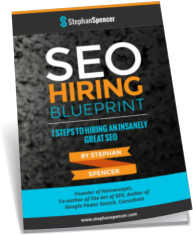If you’re seeing a decline in your email response rates, it wouldn’t be surprising; it’s a trend seen industry-wide over the the last 2 years. With open rates for B2C (business-to-consumer) at around 30% and clickthroughs at 6-7%, and for B2B (business-to-business) open rates at about 40% and clickthroughs at 10%, email marketing has become a tougher game than it was in the early days. Luckily, there are some actions you can take to stem this loss, and indeed counteract it, at least to some degree.
I should preface this by saying that some popular email clients (e.g. Outlook 2003) and webmail services (e.g. Gmail) don’t support images by default. This doesn’t mean that your email was not read, just that the email was not reported as read due to images not loading.
Nonetheless, fewer people are reading emails than before, and it’s becoming increasingly harder to peak your recipient’s interest and spur them to action. Here are a few tips to help you on your way to higher response rates in your email campaigns:
- Clean up the email format to make it more ‘scannable’. Cut down on the gratuitous branding at the top of the email and put the key messages / content teasers there instead. Remember, email messages are not web pages and should not be designed to look like such.
- Consider smaller, more targeted campaigns, tied to broader campaign strategies. e.g. your lists could also be segmented to target geographic groups or by gender. Indications are, from industry data, that smaller lists produce better response rates.
- Get more specific in your Subject line. A/B split tests show that Subject lines with specific calls-to-action increase open rates.
- Practice spam filter avoidance. This includes revisions to body copy, message headers, and HTML. I could write a whole article about that. Oh, wait a minute… I have! 😉
- Experiment with send times. Friday has been shown to be the most ‘opened’ day, but this is a moving target. As soon as marketers all jump on the Friday-send bandwagon, response rates on Friday will drop because recipients will be overwhelmed by all the volume. At this point, Thursday night send seems like an appropriate send time for B2C emails.

 SIGN UP FOR EXCLUSIVE WEEKLY CONTENT
SIGN UP FOR EXCLUSIVE WEEKLY CONTENT 


In experimentation with send times, this is a very subjective comment. If I were a recreation email, I might want to target later in the week. However, a B2B email may get much better conversion rates at the beginning of the week.
Experimentation is definitely key.